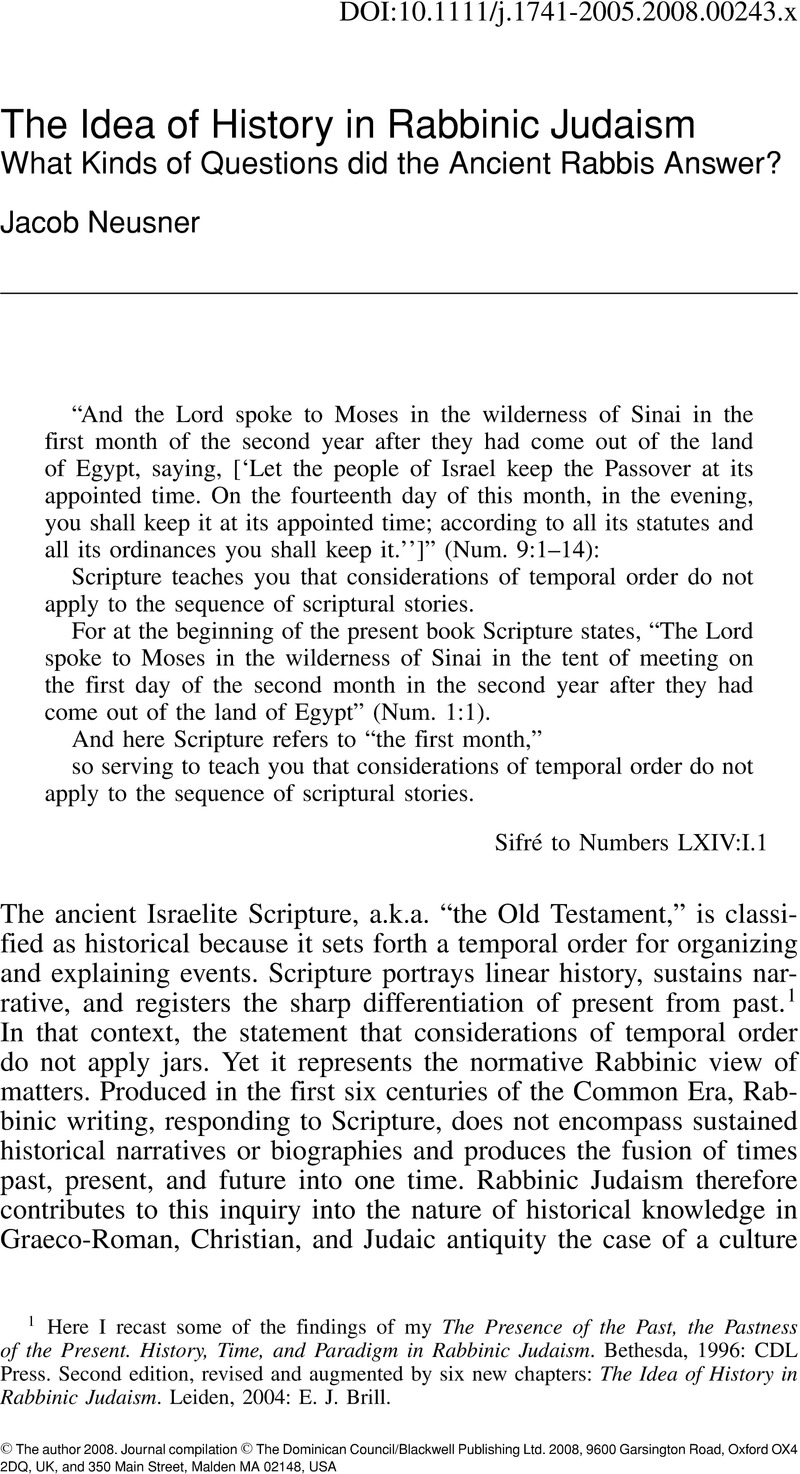No CrossRef data available.
Article contents
The Idea of History in Rabbinic Judaism
What Kinds of Questions did the Ancient Rabbis Answer?
Published online by Cambridge University Press: 01 January 2024
Abstract
An abstract is not available for this content so a preview has been provided. Please use the Get access link above for information on how to access this content.

Information
- Type
- Original Articles
- Information
- Copyright
- © The author 2008. Journal compilation © The Dominican Council/Blackwell Publishing Ltd. 2008, 9600 Garsington Road, Oxford OX4 2DQ, UK, and 350 Main Street, Malden MA 02148, USA
References
1 Here I recast some of the findings of my The Presence of the Past, the Pastness of the Present. History, Time, and Paradigm in Rabbinic Judaism. Bethesda, 1996: CDL Press. Second edition, revised and augmented by six new chapters: The Idea of History in Rabbinic Judaism. Leiden, 2004: E. J. Brill.
2 LeGoff, Jacques, History and Memory (N.Y., 1992: Columbia University Press). Translated by Randall, Steven and Claman, Elizabeth, p. xii.Google Scholar

